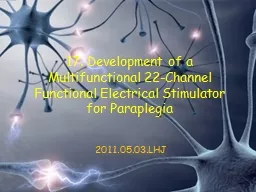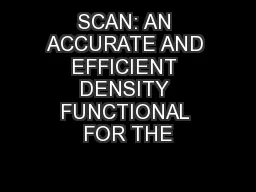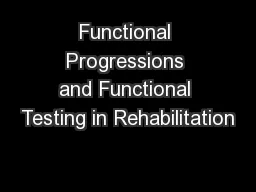PPT-17. Development of a Multifunctional 22-Channel Functional
Author : liane-varnes | Published Date : 2017-06-20
20110503LHJ contents 17 Development of a Multifunctional 22Channel Functional E lectrical S timulator for Paraplegia 171 introduction 175 conclusion 174 Praxis
Presentation Embed Code
Download Presentation
Download Presentation The PPT/PDF document "17. Development of a Multifunctional 22-..." is the property of its rightful owner. Permission is granted to download and print the materials on this website for personal, non-commercial use only, and to display it on your personal computer provided you do not modify the materials and that you retain all copyright notices contained in the materials. By downloading content from our website, you accept the terms of this agreement.
17. Development of a Multifunctional 22-Channel Functional: Transcript
Download Rules Of Document
"17. Development of a Multifunctional 22-Channel Functional"The content belongs to its owner. You may download and print it for personal use, without modification, and keep all copyright notices. By downloading, you agree to these terms.
Related Documents














